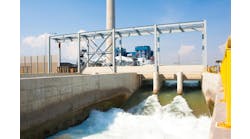Lean manufacturing and continuous improvement, based on the Toyota Production System, is now being applied to factory processes including chemical and waste water management, compressed air, boilers and thermal oxidizers. Kaizen or continuous improvement is a never-ending process -- there is no finish line. It is natural when applying the principles of continuous process improvement to initially focus on people, equipment and tools since we can use our basic senses to see what is going on. However, in the spirit of truly striving for perfection kaizen can be taken to the molecular level. "We are using technology to look at things we can't see, feel, or touch," says Tom Fabek, general manager of Profit Finders. Using specialized monitoring equipment that looks into areas of the factory that typically do not get enough attention, many markets can benefit from this analysis. Many factories get one large bill for gas and electricity and they don't really track energy use by process. For example, one Midwestern manufacturing complex that has seven 5-stage tunnel washers was firing up boilers to bring chemical baths up to temperature without paying attention to what was going on daily. When analyzed, the data indicated that bath temperatures were running at the high end of the control limits. Also, the data showed that when operators arrived in the morning they immediately fired up boilers and heated baths to temperature on average 30 minutes earlier than required for production. Similarly, at the end of the work day boilers were not turned off until the very end of the day when they could have been turned off approximately 30 minutes prior. As a result, policies for start up and shut down were set for all boilers saving over one hour per day of run time per boiler. Annual energy savings exceeded $200,000. A process audit can be done over a 30-day period to pinpoint where the problem is prior to making recommendations on how to correct the processes. Here are the six steps that we have found to be successful when conducing an audit: Step 1. Senior Management Approval The first meeting is with a company president, vice president of operations, or lean manufacturing champion. The typical outcome of this meeting is to identify a factory in the company's system that might qualify for an audit. Step 2. Discovery Day At The Factory A technical team visits the candidate factory to determine if a Process Audit is appropriate. The objective of this day is to make sure that there is a high probability of success. During Discovery Day the technical team will plan work that must be done to begin a Process Audit. This involves discussions with the plant management and the maintenance department. Step 3. The Process Audit Working through the plant maintenance department, controllers, sensors and probes are installed. A phone line or Ethernet connection is required so that data can be monitored via the Internet. Installation is completed in one day. The Process Audit does not interfere with normal factory operations. Step 4. Continuous Improvement Proposals Using data gathered during the process audit, several proposals for continuous improvement are suggested. These are reviewed with plant management and senior management. Step 5. Implement & Document The auditor is at the factory 24 x 7 via technology -- gathering hard data -- but the client's workers must implement process changes. Typically auditors will meet with the client every 90 days to check on progress and review data. Step 6. Do It Again Continuous improvement is a never-ending process. After a Process Audit, the minimum subscription in our case is for six months. After six months the relationship continues on a month-to-month subscription and a continuous stream of process improvement projects are approved and implemented. In conducting audits over the past year we have discovered that a few simple techniques go a long way toward a successful outcome: • Get your Internet connection in place early. Sometimes providing a simple phone line or Ethernet connection so Process Audit data is readily accessed via the Internet takes longer than anticipated. Get this done early so the start of a Process Audit is not delayed. Often your IT department wants to get involved for security reasons. • Have your maintenance department spend time with the audit team during Discovery Day. They will need to install the controllers and probes that gather valuable data and should be involved at the front end. • Assign a Task Force at the plant with a leader to meet with the auditors every 90 days. An outside auditor can gather data and document improvements, but the Task Force is at the plant every day. They have to make process changes happen on the shop floor. • Keep senior management involved. Have the Task Force present results to senior management every 90 days. It is best to have the Plant Task Force take ownership and credit for the improvements realized. Tom Fabek is the general manager for Profit Finders, which is headquartered in Strongsville, Ohio. You can e-mail Tom at [email protected].
Latest from Water/Wastewater
Latest from Water/Wastewater
